The Garden of Endangered Fruits at Anna Tasca Lanza
Final field notes from my 2024 gardening residency
Every Tuesday morning I would wake up and prepare for a garden tour with guests. It was always their first activity together at the cooking school and standing in the garden was a moment to really let the location sink in.
Most guests traveled at least twelve hours from their home to reach us in the hinterlands of Sicily. Francesca and Luisa would often receive calls saying, “this can’t be the right road, we are turning around.”
Yes, it was the right road. Yes, this landscape really is that unbelievable.
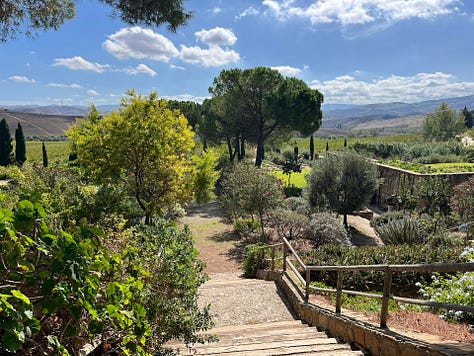

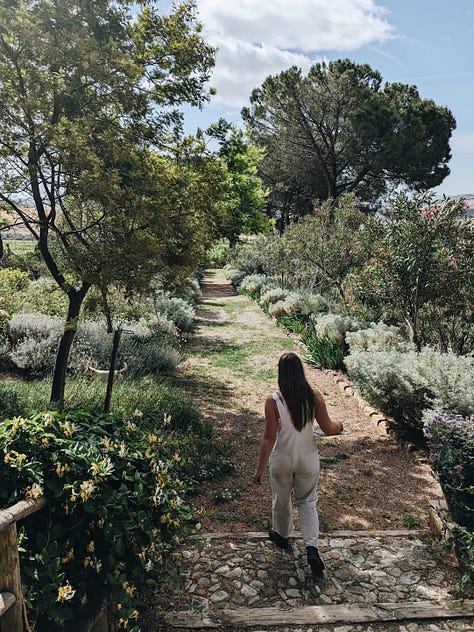
We began the garden tour under the shade of two giant stone pine trees — a variety that is famous for providing pine nuts. Sometimes we would tear apart pinecones to find a precious nut hiding inside.
I fondly showed guests a photo of the garden the first year it was planted. Giovanni’s father worked with Anna to plant the original design and now Giovanni continues working in that same garden thirty years later.
Walking down into the main garden we would pass a sour pomegranate tree and begin talking about Anna’s original intentions with the garden when she began the cooking school. She wanted to fill it with edible plants that are lesson common and thus at risk of being lost, such as sorb apples and medlars. Her garden has since become a paradise for over three hundred varieties of plants.
The garden was originally designed to be an English tea garden so scent was one of the main focuses of the design. The fourteen remaining roses are mostly David Austin varieties and they are now cohabitating with Mediterranean rockrose thanks to the drought resistant design of Fabrizia, Anna’s daughter.

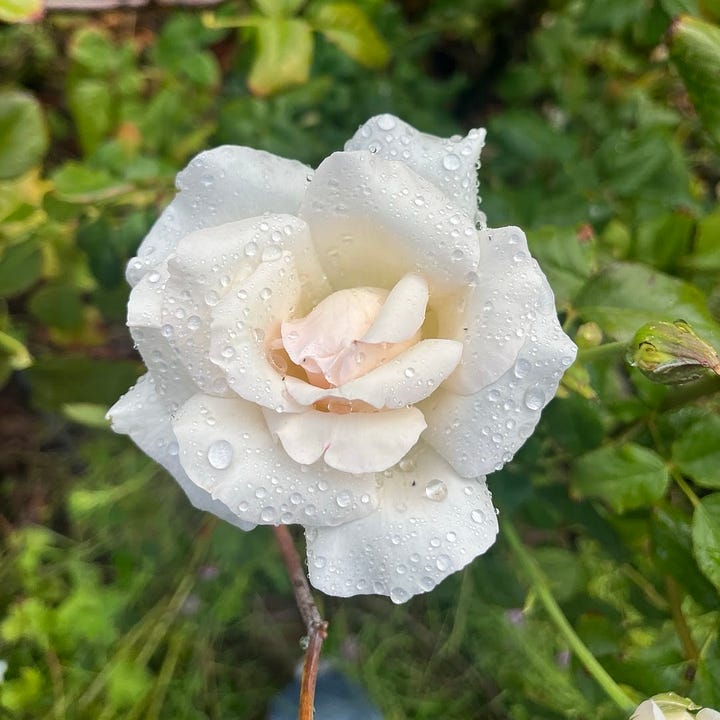
Moving away from the roses, I would usher guests into this world of bees and beekeeping in Sicily.
But first we would stop in front of a carob tree. I liked to always point out this tree because carob is used in the Sicilian kitchen and it is important in the silvopasture system of Ragusano cheese on the Eastern part of the island. The Modican cows are protected by the shade of the carob tree, but the tree is also forage which lends itself to the taste of the cheese.
I delighted in making these connections for guests in the garden and would often come back to the plants that are relevant to cheesemaking. The chef in residence, Kyle Pierce, would lead a weekly cheese tasting after guests visited the cheesemaker, Fillipo. In honor of this cheese adventure I would highlight plants like thistle, used for vegetable rennet; saffron crocus, used in the famous Piacentinu Ennese; or the many plants once used to weave the baskets that hold fresh cheese curd.
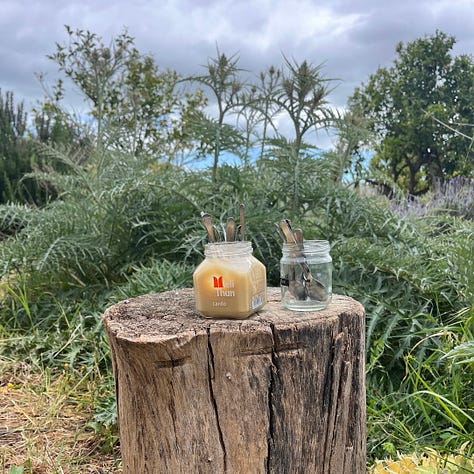
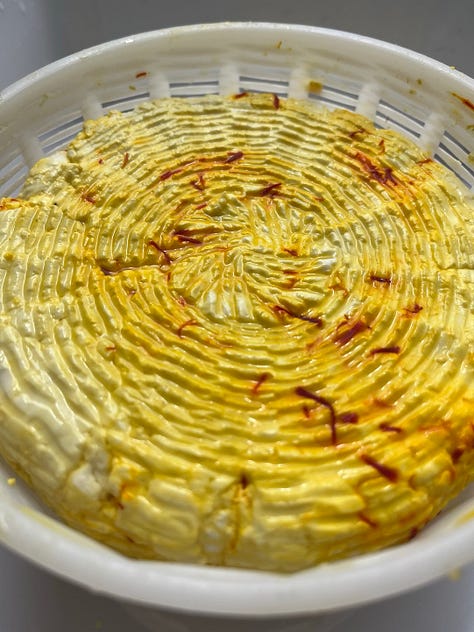

My intention with the garden was to always give guests a soft spot to land, a place where they could return and encounter the raw materials that were shaping the foods they were tasting and worlds they were encountering.
By the time we opened a discussion about beekeeping, we were near the three pistachio trees in the garden. I loved asking guests if they could identify the tree because it is a drupe that is so markedly associated with Sicily now.
Pistachios were brought to the island in the 800s by the Emirate of Sicily. I pointed out that the tree is dioecious — meaning that it needs a male and female counterpart. The Garden of Endangered Fruits has two female trees and one male tree. The other element I mentioned is this relationship between the root stock of the pistachio tree — the mastic tree or lentisco.
Another grafting story lies in the eight different varieties of citrus in the garden.
There are only three ancestral varieties of citrus — citron, mandarin and pomelos. All other three hundred varieties are hybrids. In order to replicate these hybrids it is necessary to graft the plant. We had eight different varieties of citrus in the garden.
After the garden tour, guests were whisked away into the kitchen until we would meet again later in the week for an enfleurage workshop.
During the enfleurage with guests, I invited them to let their senses lead, so each week the perfume we made together was different. In my personal enfleurage practice however, I focused on three main scents in the garden — zagara, jasmine and tomato leaf.
Zagara —
I chose to first work with citrus flowers because the timing was right, zagara was blooming. The week before I began enfleurage, I was in Palermo with my friend Anna and we were looking at our favorite outdoor library. The man running the library, Pietro, was the first to teach me the Sicilian word for orange blossoms— I noticed he had a few in his donation box and told me that it was custom to work with zagara to cultivate your dreams. He suggested I go home and draw a bath, sprinkle in some zagara and dream big.
I did not have a bathtub but I did have access to a lot of citrus trees so instead I made enfleurage with guests and worked a lot with the vivid dreams that would visit me while living in the garden.
I also talked a lot about the connection between citrus and the mafia. I always recommended the book, The Land Where the Lemons Grow by Helen Attlee as a follow up.
One endearing element of zagara is that citrus trees are often bred to over produce and so you need to thin the trees to ensure the branches won’t break when they are fruiting. Picking off zagara every day felt like a nice compromise between leaving enough flowers for the bees, allowing some flowers to become fruit and preserving some of the scent in an enfleurage pomade.
Zagara blooms now — March and April — but one strange thing that happened last year was a secondary bloom in August and September. This is not a good sign, it means the trees were stressed, but rightfully so, the drought is intense.
Jasmine —
Jasmine is the plant that links the story of Grasse, France to Sicily. In the 1920s - Sicily was the main grower of jasmine to export to Grasse for the purpose of perfumery. By 1946, there were twelve jasmine producing plantations in the Milazzo area which employed more than 2000 women. The mistreatment of the workers led Grazia Saporita to organize the women in protest. They carried out a nine day strike which would ultimately lead to other agricultural protests in Southern Italy.
The agricultural reforms in the 1970s outlawed jasmine plantations, but jasmine remains one of the most sought after scents in perfumery.
Jasmine has a very persistent and long bloom in Sicily. We had five different varieties that we could use in our enfleurage. Night blooming jasmine only releases volatile molecules under the darkness of night and has an overpowering powdery character. I treasure pink jasmine and star jasmine because they have coconut notes. There is a wall of false jasmine in the courtyard which was reliable but not the most interesting in my opinion.
Jasmine is a fun plant to talk about pollinators because the honeybee morphology is not compatible with jasmine. Instead, moths are visiting jasmine, especially the varieties that bloom after sundown.
Tomato leaf —
In my mind, Anna Tasca Lanza is known by most for the iconic tomato paste workshop they host in August.
I wanted to continue enfleurage during the hot summer months but as you can imagine, there were no flowers. So I moved on to tomato leaves to pay homage to the tomato paste workshop.
I was no stranger to the trendy scent of tomato leaf - I lived in LA and smelled many a Flamingo Estate candle burning. I do love the smell, I think it is so primal and sophisticated and so I was thrilled to see if the leaves would work in enfleurage.
Tomato leaf enfleurage is divine. It has almost this menthol quality to it and the freshness makes me feel like I am once again with sleepy eyes picking dewey tomato leafs off the vine while sneaking a few cherry tomatoes warmed by the morning sun.
Last summer the tips of my fingers were permanently stained black from tomato tar — the leaf is actually where most of the scent lives in the tomato plant. The flowers are the least interesting part of the plant because it largely self pollinating.
The pollinators that do have a relationship with tomato plants are bumble bees because they have the ability to vibrate the flower and allow the pollen to fall other fuzzy bodies.
It is also fun to use tomato leaves for enfleurage because you can use this activity to thin your plant and remove any “suckers.” You are ultimately helping the plant produce more tomatoes.
Moving to modern day agricultural movements, maybe you have heard about the mafia’s ties to tomatoes and agricultural exploitation? I felt it was important to include this story of tomatoes in Sicily while we were still focusing on the beauty of the plant and all the delicious products we can make with the nightshade.
During tomato season, Francesca and Luisa always organized a visit to Rinascita, a cooperative of Pomodoro Siccagno growers in Valledolmo, who proudly denounce working with the mafia.
These three perfumes — zagara, jasmine and tomato leaf — are charming in and of themselves but I also hope that guests smell the perfume and remember the stories behind each plant.
Other field notes from my residency —
Unrelated to gardening, I found two puppies near the garden in April. We heard them crying one Sunday evening and the man who found them wouldn’t tell me where he saw them. He ordered me to leave them alone, to “let them die.”
The next morning I heard them crying again and scooped them up. I sincerely did not know what to do but I couldn’t leave them.
I snuck them into my home and cleaned them up.
They were covered in fleas. I wasn’t sure they were going to live because they were quite small. I named the Cacio and Pepe because as I was washing the fleas off of them their white fur looked speckled like the pasta dish.
During the month they lived with me in secret they taught me a lot about love and how hardened my heart was. They cracked it open and made me confront feelings that I was so happy to find again— in some ways for the first time. I cried buckets when I had to give them to other people. I just simply could not give them the life they deserved as large shepherding dogs.
I am happy to report Cacio and Pepe are alive a well today.
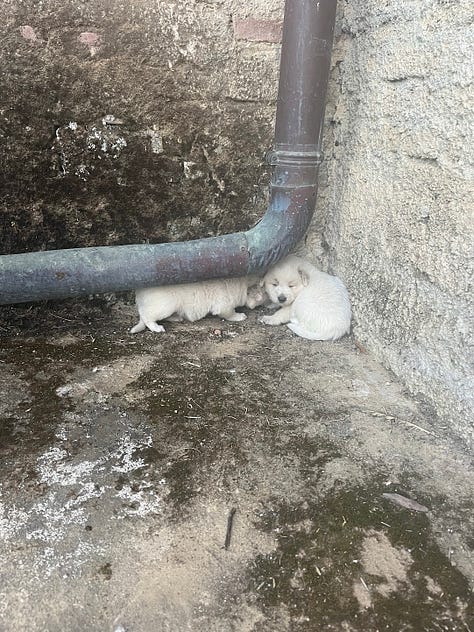
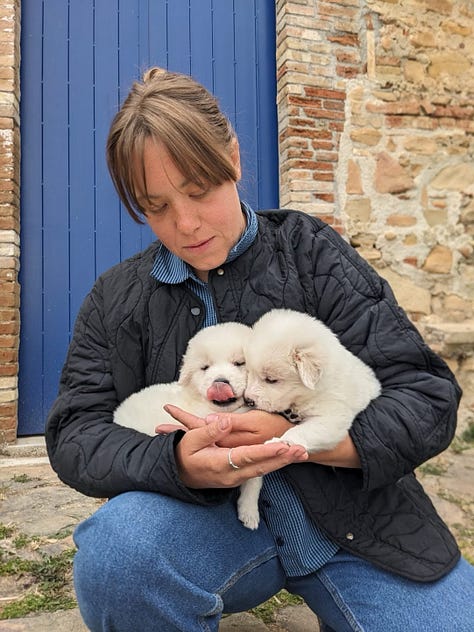
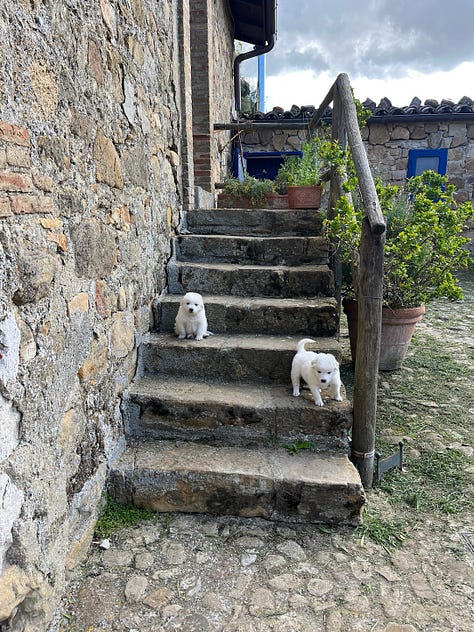
Flower arranging became one of my favorite parts of my residency. While working in the garden I would see different elements come together and know exactly how I wanted to arrange a bouquet. It was a fun challenge to make them different and use what I had available.
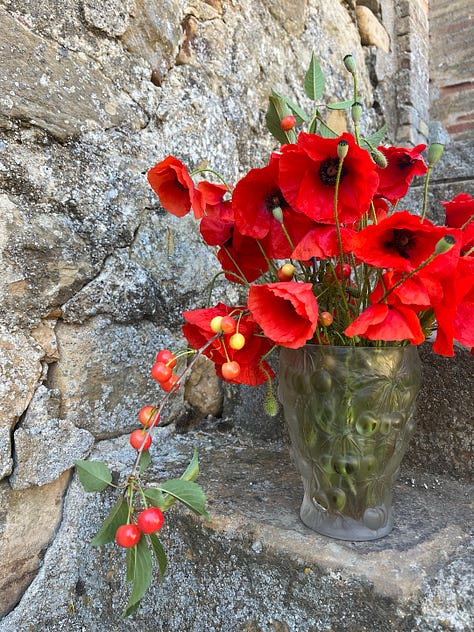

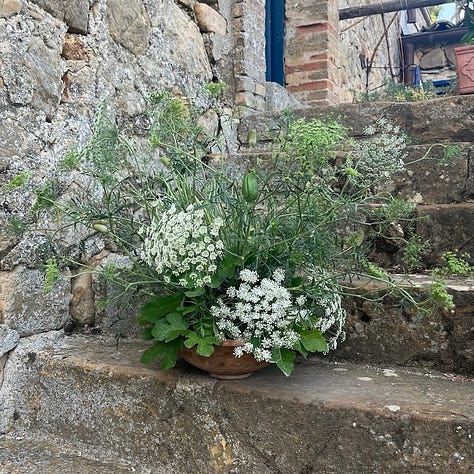
On another personal note, I did not know how to drive a stick shift when I arrived in Sicily.
This was a problem.
The only cars we had on the property were obviously stick only. My mobility was once again at the mercy of others until I learned how to drive. My parents both knew how to drive a stick but neglected to teach me when I was growing up with them, this made me particularly bitter because it made me feel unsafe.
My bitterness turned to sweetness the first day I drove the car alone to Roccapalumba and had to slow down for a huge flock of sheep on this beautiful winding road riddled with pot holes. Laughing about it all now I would not have had it any other way. It was a devastatingly beautiful and difficult place to learn how to drive but I am an expert now thanks to the experience.
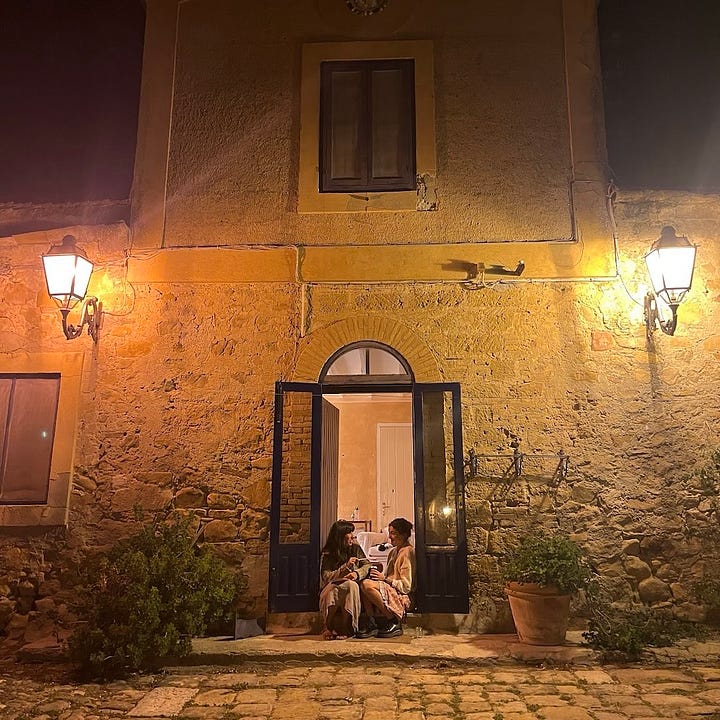
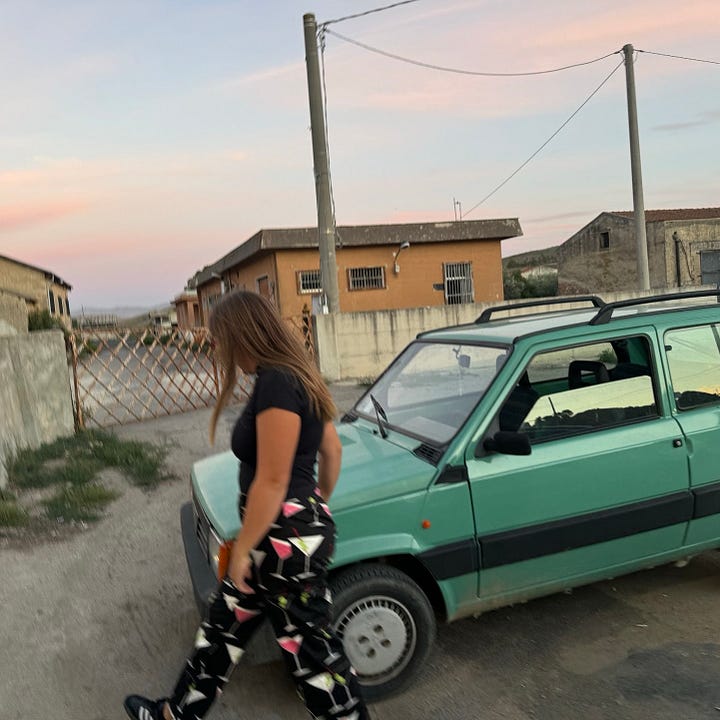
I look back lovingly at the tiny little routines and rhythms of the day I created in the garden.
9:00am: the Sicilians were actually rather punctual for their coffee break at bar piscina. I felt so honored to be invited to the exclusive morning coffee with a few of the men working for Regalali. I also knew that it was crucial for me to accept the invite even if I knew I would be anxious from the caffeine for the rest of the day. The morning coffee gave me an important level of confidenza with these men that I had to work with everyday. Mind you women never work with them in the grape vines.
I cherished the fifteen minutes that I got to try and listen to them shift into full throttle Sicilian. I have a few recordings of our mornings so that I can listen back and remember how hard it was to understand.
I am happily back in my routines in Pacentro and surrounded by my familiar Abruzzese dialects but I wanted to put into words some remaining thoughts and small pieces that made my time at Anna Tasca Lanza so special.
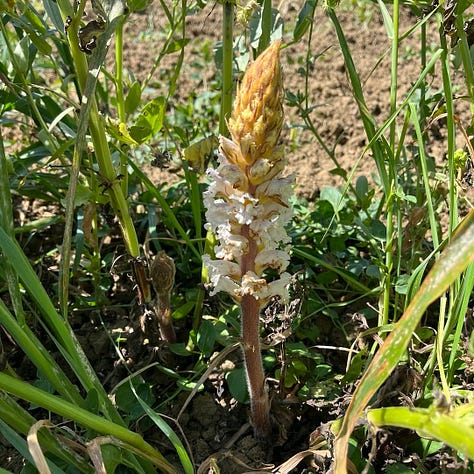


Thank you to everyone who I met in the garden and thank you to the garden for allowing me to tend to you while holding me through my own growth.
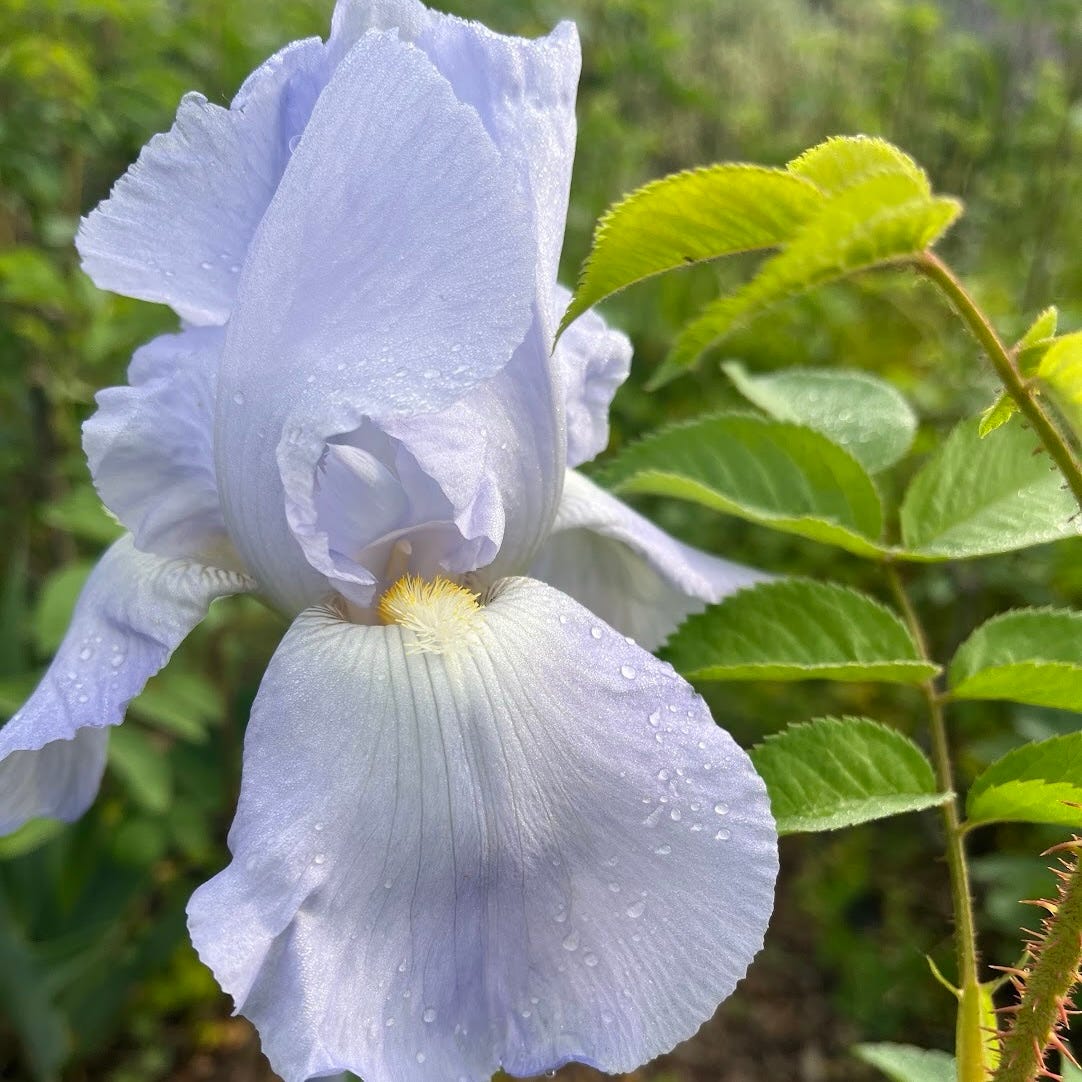

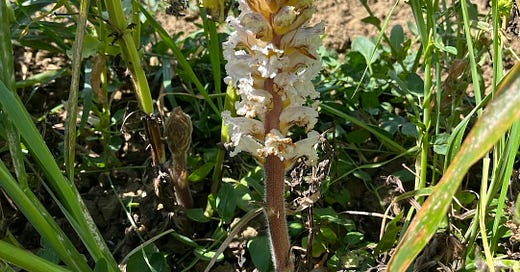



I loved reading this Mia. The gardens at Anna Tasca Lanza were my favorite part of my time there. How special that you got to see it through the seasons.
Really beautiful reflections ❤️